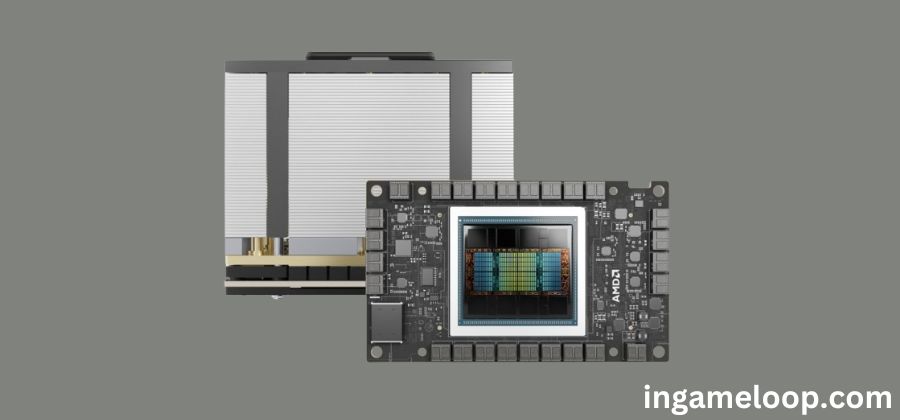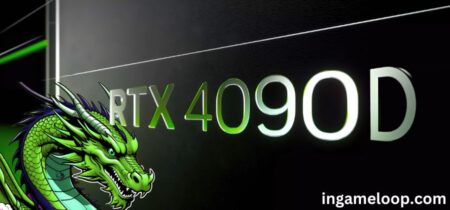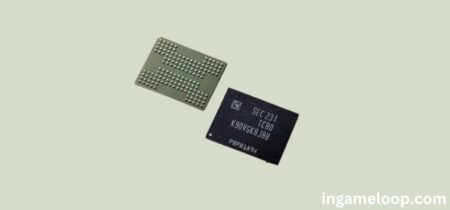
In an epoch-making development, technology titans Microsoft, Meta, and OpenAI have thrown their considerable weight behind AMD’s latest marvel—the MI300X AI platform. This momentous endorsement unfolded during AMD’s recent launch event, where the company’s CEO, Lisa Su, unveiled the MI300X as the most intricate chip ever crafted by AMD, flaunting an astronomical 153 billion transistors.
This backing from industry behemoths marks a tectonic shift in the AI domain, challenging the hegemony of Nvidia in the field. The MI300X, a technological tour de force, eclipses Nvidia’s all-conquering H100 GPU with its sheer processing might and advanced architecture.
Lisa Su, in her impassioned presentation, elucidated the MI300X’s composition, spotlighting its deployment of 12 chiplets on a fusion of cutting-edge 5nm and 6nm nodes. The chip’s sophisticated packaging, per AMD’s claim, stands as the most intricate globally. The foundational stratum of the chip comprises four substantial IO dies, featuring Infinity cache, PCIe Gen 5, HBM interfaces, and Infinity Fabric. Stacked atop are eight CDNA 3 accelerator chiplets, also christened “XCDs,” endowing an astounding 1.3 petaflops of raw FP16 compute power.
Complementing this computational juggernaut are eight HBM3 memory modules, culminating in a staggering 192GB of memory. The MI300X, in essence, emerges as a colossus in the realm of AI processing.
AMD asserts that the MI300X outstrips Nvidia’s H100 across pivotal metrics, boasting 2.4 times the memory capacity, 1.6 times the memory bandwidth, and 1.3 times the raw compute power. In real-world AI training and inferencing benchmarks, AMD claims that the MI300X is approximately 1.2 times speedier than its Nvidia counterpart.
The visible support from industry juggernauts like Microsoft, Meta, and OpenAI has instantaneously impacted AMD’s market standing, precipitating a surge in the company’s share price. The tableau of these tech luminaries endorsing the MI300X has set off waves in the AI hardware market, hinting at a conceivable shift in alliances.
Yet, beyond the hardware prowess, the contest in the AI arena is profoundly shaped by software support. Nvidia’s CUDA platform has entrenched itself as the industry benchmark, basking in superior support compared to AMD’s ROCm. The event underscored Nvidia’s substantial investment in software engineering, a testament to the company’s strategic priorities.
While underscoring the MI300X’s memory capacity advantage, AMD acknowledges the paramount significance of robust software support. The competition is not just about hardware capabilities but also about cultivating an ecosystem that is developer-friendly and widely embraced.
Despite the favorable momentum, queries linger about the pragmatic embrace of the MI300X by major players. Microsoft’s substantial investment in Nvidia’s H100 GPUs begets uncertainties about the extent of their commitment to AMD’s alternative. The true impact of these endorsements on actual purchase quantities remains nebulous.
As AMD cautiously forecasts revenue from the MI300X, speculation arises about the company’s genuine aspirations. Is the prudent approach a strategic maneuver to temper expectations, or does it genuinely mirror the company’s outlook? The repercussions for the gaming community are equally uncertain. While triumph in the AI sector could potentially fortify AMD’s position in gaming GPU technology, concerns arise regarding resource allocation and the diversion of attention from state-of-the-art manufacturing capacity.
The endorsement from Microsoft, Meta, and OpenAI has thrust AMD’s MI300X into the limelight, challenging Nvidia’s supremacy in AI chips. The future triumph of the MI300X hinges not solely on its hardware capabilities but also on the intricate interplay of software support, market dynamics, and strategic decisions by industry leaders. As the dust settles, the tech cosmos eagerly anticipates the unfolding narrative of AMD’s expedition into the formidable realm of AI.
Windows Copilot is not playing well with AMD’s Adrenalin software
AMD Radeon GPU Detective Helps Troubleshoot GPU Crashes
M3 is NOT as fast as Snapdragon X Elite — Intel and AMD have closed the gap as well







